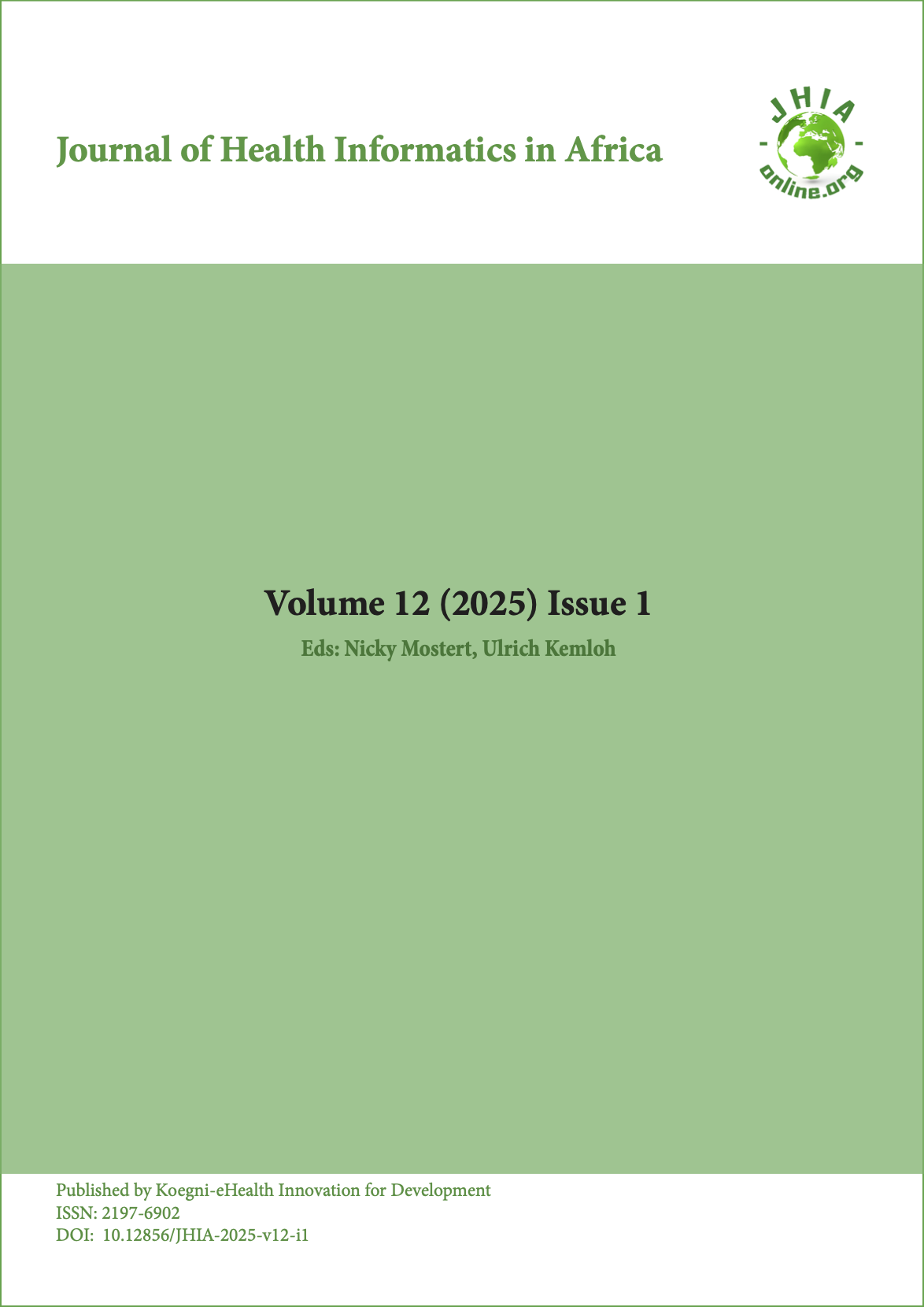Predicting Malaria Outbreaks in Children Under Five: Insights from Ghana
DOI:
https://doi.org/10.12856/JHIA-2025-v12-i1-550Abstract
Background and Purpose: Malaria, a persistent public health challenge in sub-Saharan Africa, disproportionately affects children under five, with socio-economic disparities and environmental factors exacerbating its burden. This study seeks to identify patterns that serve as early indicators of potential outbreaks, thus enhancing the country’s ability to allocate resources efficiently and improve early warning systems.
Methods: This study employs the Random Forest algorithm to predict malaria outbreaks using historical incidence data from Ghana (2011–2021).
Results: By incorporating lagged variables and analyzing spatial and temporal dynamics, the model captures seasonality, including peaks during rainy seasons and regional disparities in malaria cases. The model achieved a robust R-squared value of 0.8193, reflecting substantial predictive accuracy. Regional hotspots such as Ashanti and Western exhibited higher case numbers than Greater Accra, emphasizing the need for localized interventions.
Conclusions: The study demonstrates the potential of Random Forest as a scalable tool for malaria prediction in resource-constrained settings, enabling data-driven decision-making and optimizing public health resources. These findings align with global malaria reduction goals, emphasizing the integration of machine learning into public health strategies to reduce morbidity and mortality in vulnerable populations.





